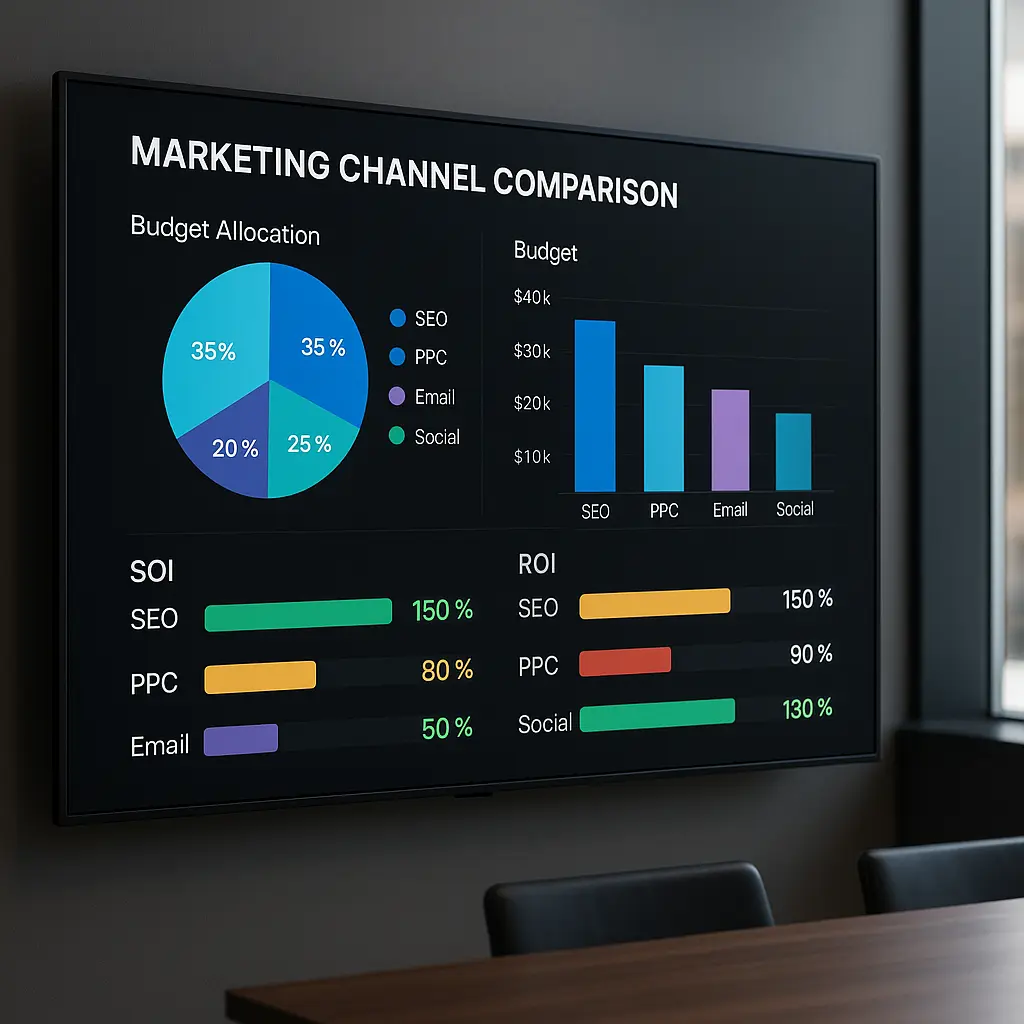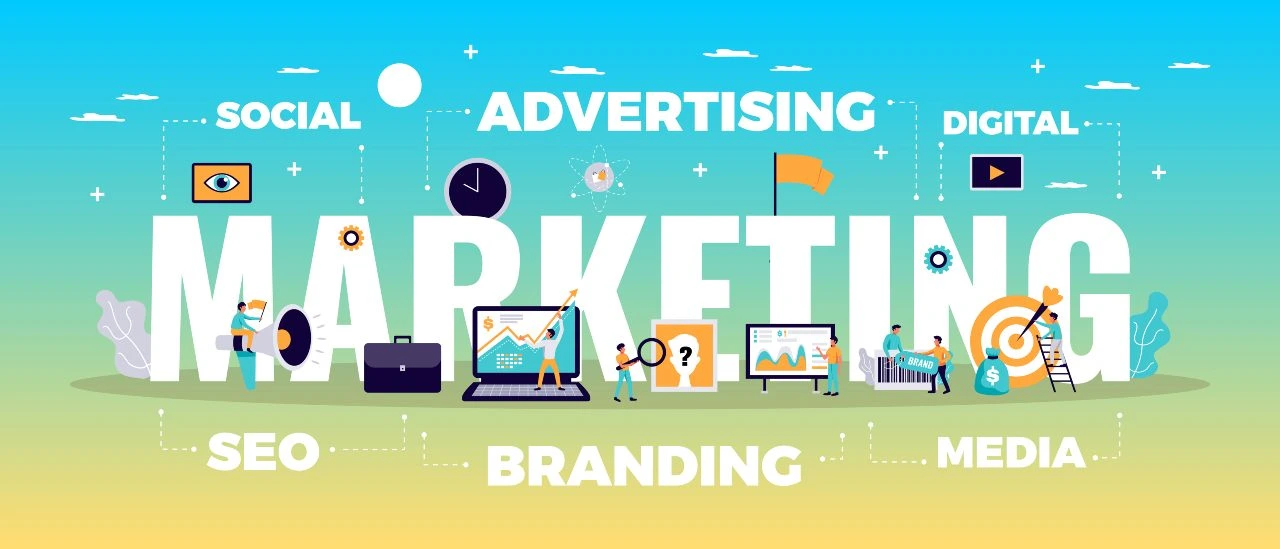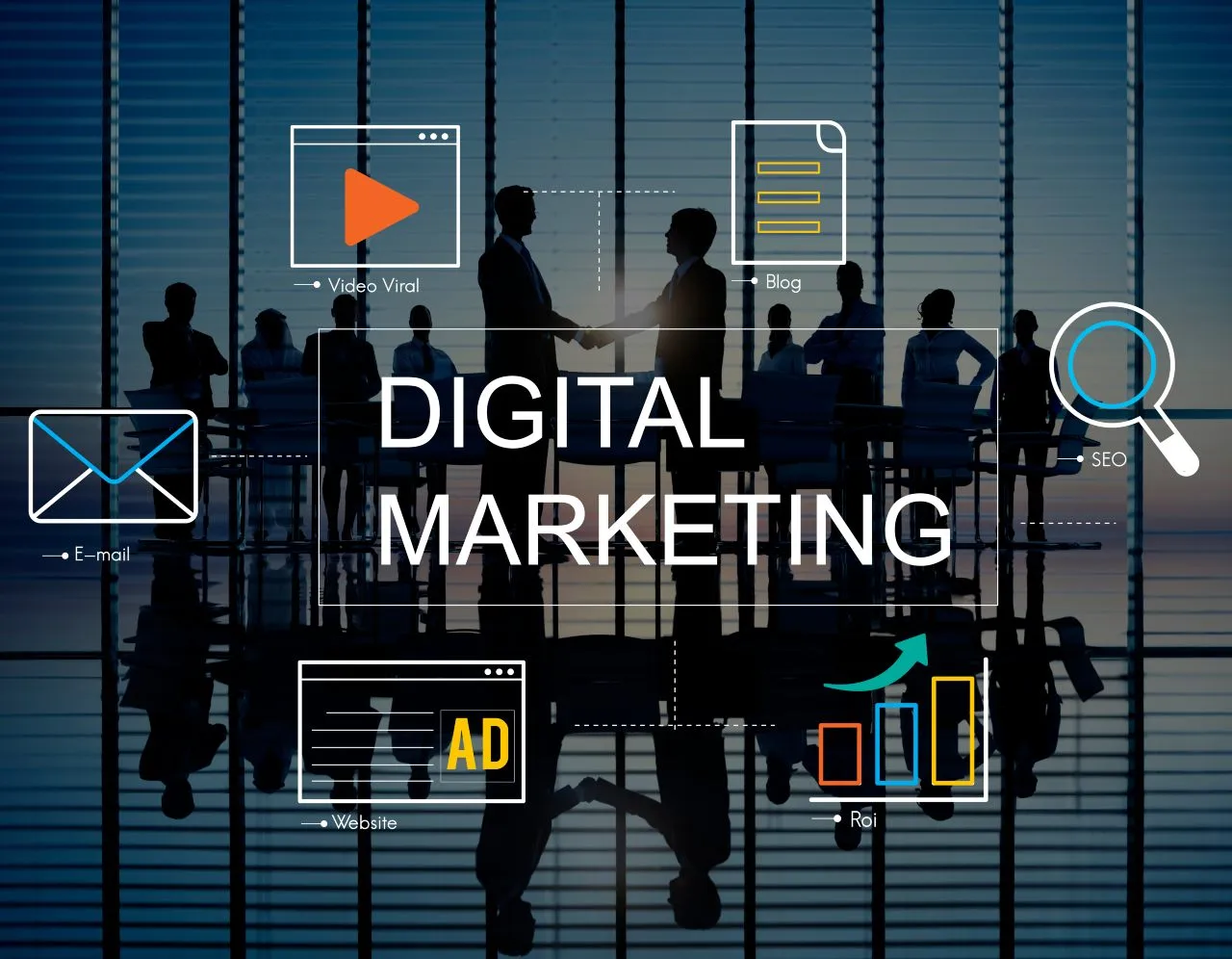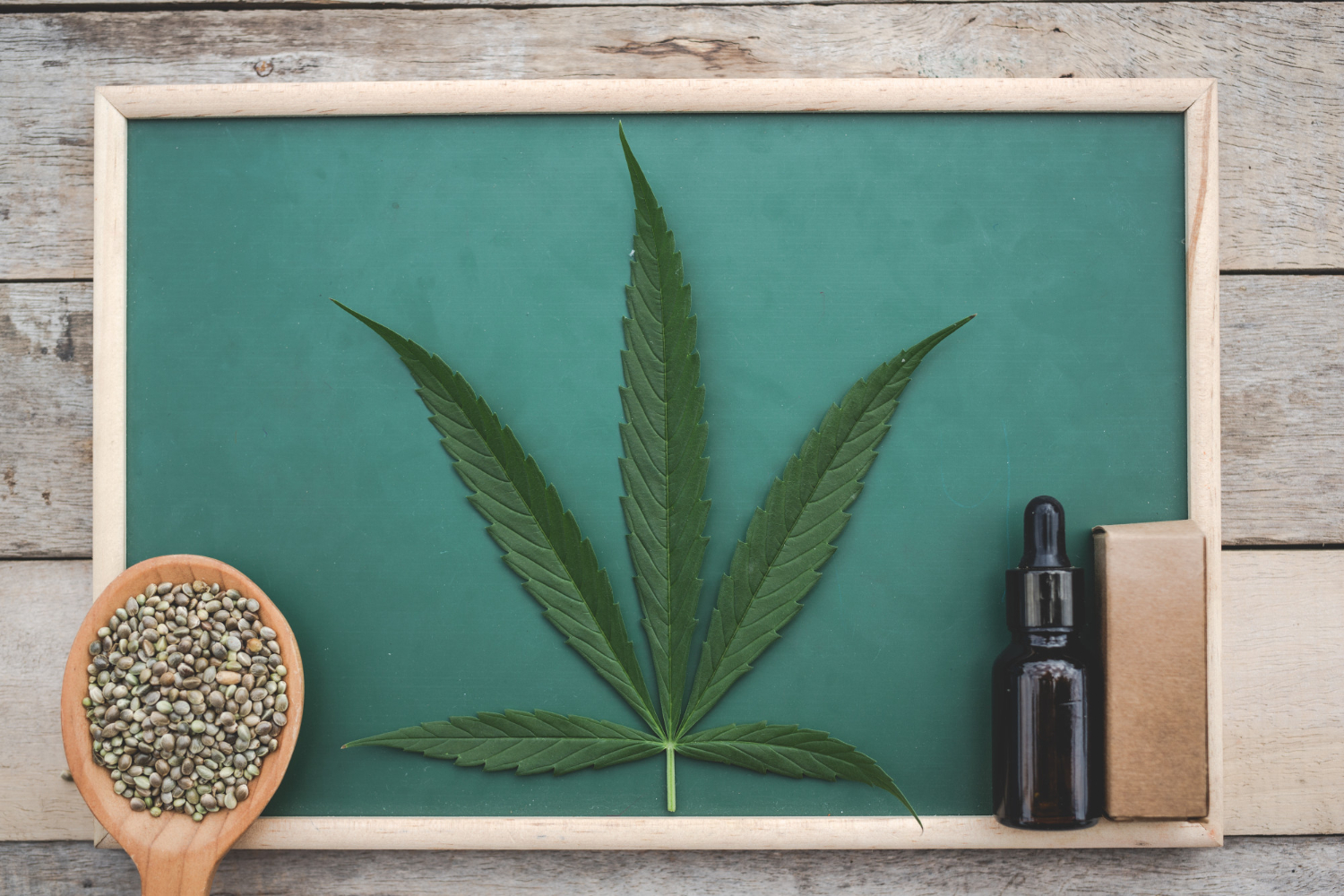Listen to article
“Is affiliate marketing still a viable strategy?” Absolutely. And it’s not just surviving—it’s thriving.
As we look ahead, several key trends are set to redefine the affiliate marketing landscape. More than ever, success in 2025 hinges on adapting to these emerging strategies and technologies. From AI-powered personalization to the dominance of video content and the rise of purpose-driven brands, the future of affiliate marketing is dynamic and full of opportunities.
In this article, we’ll explore the most significant growing affiliate marketing trends poised to shape 2025, offering valuable insights and actionable strategies to help you stay ahead of the curve.
How AI and Automation Are Redefining Affiliate Marketing
The pace of technological innovation in affiliate marketing is nothing short of extraordinary, with AI and automation leading the charge. These tools are no longer optional add-ons but essential components that empower marketers to deliver hyper-personalized experiences, streamline operations, and capture audience attention more effectively than ever. As consumer expectations for tailored interactions rise, the adoption of AI-driven tools isn’t just a competitive edge—it’s fast becoming a necessity.
- The chatbot market is projected to skyrocket to $15.5 billion by 2028, up from $5.4 billion in 2023. With AI-driven chatbots managing most customer interactions, brands can now deliver personalized and responsive support 24/7. Source
- A staggering 73% of consumers expect AI to elevate customer service quality, indicating growing trust and preference for AI-enabled interactions. Source
- Generative AI is reshaping content creation, with tools like Sora turning basic text into engaging video ads, opening new possibilities for creative storytelling in affiliate campaigns. Source
- AI and machine learning allow advertisers to analyze vast datasets, uncovering user behavior insights that enable highly targeted and effective campaigns. Source
- Nearly 60% of marketers are already leveraging AI tools, with specific applications in content creation (52%), social media management (39%), and chatbot integration (34%). Source
- Advanced AI algorithms enhance user experiences by predicting the most relevant content or offers, increasing engagement, boosting conversion rates, and fostering long-term customer loyalty. Source
Key Takeaway
The rise of AI and automation in affiliate marketing signals a paradigm shift in how businesses approach customer engagement and campaign optimization. This isn’t just about efficiency—it’s about connecting with audiences on a personal level, making every interaction meaningful. Savvy marketers are already capitalizing on these innovations, and the barrier to entry is lower than ever with user-friendly tools at your fingertips. The key to success? Start small, identify what resonates with your audience, and scale with data-driven strategies. For deeper insights, explore the latest AI marketing statistics to see how artificial intelligence is shaping performance-driven campaigns.
Pro Tip:
Use AI to identify patterns and trends within your affiliate performance data. Platforms with AI-driven insights don’t just save time; they reveal growth opportunities you might otherwise miss, from crafting tailored offers to optimizing ad spend.
Omnichannel Marketing and Personalization
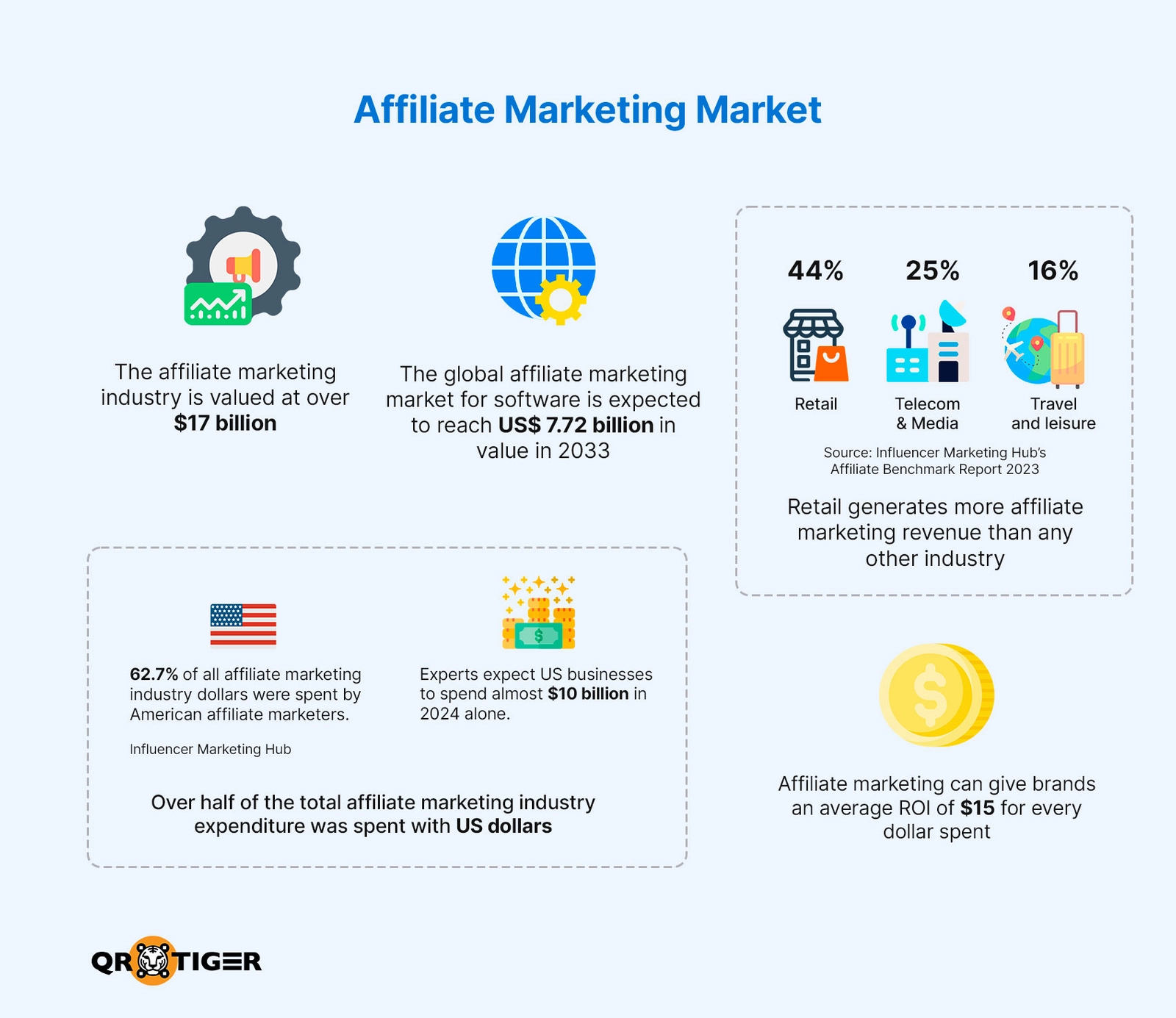
Source: QR Tiger
Today’s consumers expect more than just great products—they demand seamless, personalized experiences across every interaction with a brand. Embracing an omnichannel approach ensures consistent, relevant communication, whether it’s via email, social media, or in-store experiences. When executed effectively, this strategy not only fosters loyalty but also drives measurable business growth. However, with many brands struggling to align their omnichannel efforts consistently, there’s a gap between potential and execution.
- Omnichannel marketing integrates all customer touchpoints to create a unified and cohesive experience. Source
- Personalized recommendations, timely promotions via email and SMS, and stellar customer support are pivotal in building customer loyalty in omnichannel frameworks. Source
- Only 27% of senior marketers feel their omnichannel journeys are seamlessly aligned, underscoring a critical need for innovative problem-solving in this area. Source
- 75% of consumers are willing to spend more with brands that prioritize exceptional customer experiences. Source
- Over half of customers will switch to a competitor after a single negative experience, especially if personalization is lacking. Source
- Marketing automation enables scalable personalization, increases engagement, and enhances the overall customer journey while saving time and resources. Source
Key Takeaway
Brands that thrive in the modern marketplace understand that delivering a connected and tailored customer experience isn’t optional—it’s essential. With consumers becoming less tolerant of disengaged interactions, businesses must invest in aligning their omnichannel efforts to create frictionless and personalized journeys. Whether through leveraging data-driven automation tools or focusing on consistent communication across all platforms, prioritizing customer-centric strategies is key to fostering long-term loyalty and boosting your digital marketing ROI.
Pro Tip:
Stay ahead of the competition by using customer feedback and behavior insights to fine-tune your omnichannel strategy. Implement technology like AI-driven analytics and segmentation tools to better predict customer needs and preferences, ensuring your messaging is both timely and hyper-relevant.
Mobile Potential in Affiliate Marketing Strategies
With mobile devices driving the majority of global internet traffic, affiliate marketers must adapt their strategies to meet users where they spend most of their time—on mobile. As content consumption increasingly shifts to mobile-friendly platforms like TikTok, brands have a unique chance to connect with highly engaged audiences through quick, mobile-first campaigns that deliver value instantly. Ignoring mobile optimization isn’t just a missed opportunity—it could mean losing out on a major share of your potential audience.
- Mobile devices account for approximately 59% of total internet traffic globally, underlining the need for mobile-optimized affiliate marketing strategies. Source
- TikTok users spend an average of 52 minutes daily on the app, reinforcing its potential as a powerful platform for mobile-first engagement. Source
Key Takeaway
Mobile isn’t just another channel—it’s a dominant force shaping how content is consumed and how purchase decisions are made. To succeed in affiliate marketing, brands must embrace mobile-first strategies, which leverage the intimacy and immediacy of mobile interactions. Platforms like TikTok provide an unparalleled opportunity to engage users, but success lies in more than just presence. To truly capture attention, your content must be optimized for mobile usability, fast loading speeds, and relevance to a multitasking audience.
Pro Tip:
Go beyond basic mobile responsiveness by ensuring that your visuals, call-to-actions, and checkout processes are mobile-friendly. Test your mobile experience regularly and explore mobile-focused interactive elements, such as swipeable ads or short-form video, to keep your audience engaged and drive conversions.
Why Video Content is Revolutionizing Affiliate Marketing
The power of video content in affiliate marketing lies in its ability to tell compelling stories, simplify complex messages, and build trust—all while catering to consumers’ ever-shrinking attention spans. Affiliate marketers who leverage video not only create engaging experiences but also position themselves at the forefront of a trend that continues to dominate digital landscapes. From boosting brand authenticity with influencers to enabling frictionless shoppable experiences, video is reshaping how affiliates connect with and convert their audiences.
- Short-form video content has become the go-to format for engaging younger demographics, with platforms like TikTok, Instagram Reels, and YouTube Shorts driving consistent growth. Source
- Nearly 60% of small businesses are leveraging short-form videos to reach broader audiences and nurture customer relationships. Source
- Influencer-led video campaigns are thriving, with TikTok, YouTube, and Instagram Reels serving as powerful platforms for authentic product endorsements. Source
- Online video content accounted for over 82% of all consumer internet traffic by 2022, emphasizing its crucial role in any marketing strategy. Source
- Video as a marketing tool has reached new heights, with 91% of businesses utilizing it in 2023, up from 86% the year prior. Source
- An impressive 87% of marketers link video campaigns to increased sales results, underlining its direct impact on revenue generation. Source
- For 82% of consumers, video remains a deciding factor when it comes to purchase decisions, underscoring its influence on modern buyers. Source
Key Takeaway
Affiliate marketers who neglect video risk losing relevance in an ecosystem increasingly driven by visual content. Whether it’s crafting engaging short-form clips to capture attention, partnering with trusted influencers to establish credibility, or creating shoppable videos for seamless conversions, the possibilities with video are immense. The future of affiliate marketing is undoubtedly visual, so adopting video-first strategies can be the differentiator marketers need to thrive in a competitive environment.
For businesses looking to stay ahead in this competitive space, combining video with other effective tactics—like a strong B2B website strategy—can amplify results and align marketing efforts for maximum impact. By integrating video into a comprehensive marketing approach, affiliate marketers can build trust, drive conversions, and achieve sustainable growth.
Pro Tip:
With mobile users making up a significant chunk of video viewers, ensure your content is optimized for smaller screens. Leverage vertical video formats and include concise yet compelling calls to action (CTAs) to drive clicks, engagement, and conversions.
Prioritizing Engagement: How Quality Content and Interactivity Drive Affiliate Success
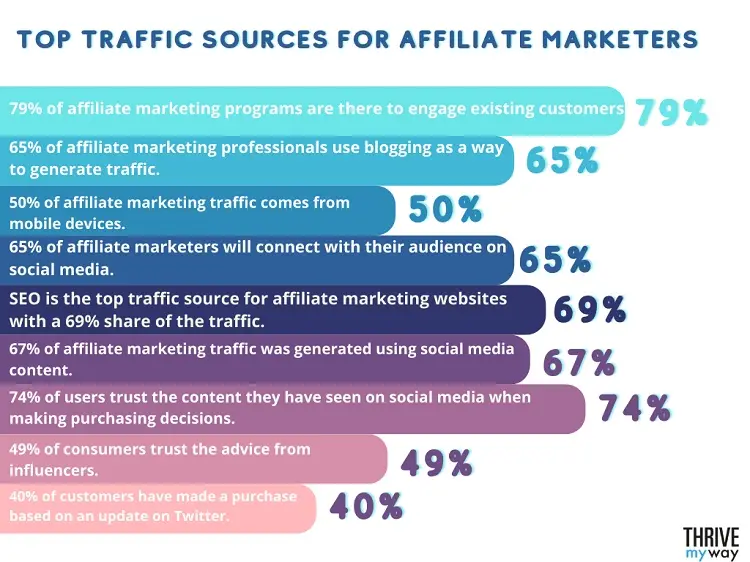
Source: Thrive My Way
In the competitive world of affiliate marketing, grabbing and holding audience attention is no small feat. With audiences being increasingly selective about the content they consume, marketers are shifting their focus toward creating high-quality, interactive experiences that foster deeper connections and drive engagement. Whether it’s a captivating short-form video or a gamified quiz, the goal is clear: deliver value and keep your audience coming back for more.
- An impressive 83% of marketers prioritize content quality over quantity, even if posting less frequently, to cultivate stronger, more engaged communities. Source
- Short-form videos are watching magnets, with almost all of them viewed for over 40% of their duration. Source
- Specifically, 59% of short-form videos retain viewers for 41-80% of their length, while 30% achieve an average watch rate exceeding 81%. Source
- Interactive videos serve as powerful tools to educate audiences, enhance storytelling, and simplify complex concepts, resulting in better engagement and memorable experiences. Source
- Gamified and interactive content, such as polls, quizzes, and branded games, significantly lifts user interaction and lengthens time spent engaging with the brand. Source
Key Takeaway
Affiliate marketing success hinges on authenticity and meaningful engagement, not just pumping out content for the sake of quantity. High retention rates for short-form and interactive videos highlight the power of value-driven content to captivate and hold attention in a content-saturated environment. By pivoting to quality over volume and embracing interactivity, brands not only build trust but also improve conversions. The future belongs to marketers who can turn passive viewers into active participants.
Pro Tip:
Leverage analytics tools to track and dissect your audience’s behavior. Identify which interactive formats—be it quizzes, polls, or videos—drive the most engagement and use these insights to fuel your content creation strategy. Don’t be afraid to experiment, but always ensure your interactivity aligns with your messaging and delivers tangible value to your audience.
Niche Opportunities on Platforms Like Reddit and Microsoft
As consumer behaviors shift toward seeking more personalized and authentic experiences, platforms like Reddit and Microsoft are proving to be treasure troves for affiliate marketers. These platforms not only provide access to hyper-engaged audiences but also offer cutting-edge tools—such as AI-powered insights and community-driven conversations—that enable brands to connect with users in meaningful ways. For marketers aiming to stay ahead of the curve, leveraging the unique strengths of these platforms can unlock both visibility and conversions in untapped markets.
- Reddit has cemented itself as a hub for consumer research, with “+Reddit” appearing in an astounding 32 billion Google searches last year. This highlights its unparalleled influence over purchase decisions and its ability to drive authentic consumer engagement. Source
- The platform’s growth is undeniable, posting a 50% year-over-year increase in both revenue and active users in Q2 2024, making it an increasingly lucrative space for affiliate marketing efforts. Source
- Microsoft is also becoming a rising star for affiliate marketers. Its advanced AI tools, particularly integrated into Bing and Edge, promise improved targeting, deeper personalization, and smarter advertising solutions to help marketers refine their messaging and drive better ROI in 2025. Source
Key Takeaway
The evolving digital landscape is rewarding marketers who are willing to explore niche platforms and adapt their strategies accordingly. Reddit’s community-centric model and Microsoft’s AI capabilities signal a shift in how affiliate marketers can reach audiences—from fostering trust in online communities to leveraging hyper-personalized targeting. Successfully integrating these platforms into your affiliate toolkit can provide not only wider reach but also higher-quality leads through more engaged audiences.
Pro Tip:
On Reddit, authenticity is key. Participate in discussions, respect the norms of individual communities, and add genuine value before promoting a product. On Microsoft, experiment with its AI-driven tools to refine user targeting and create campaigns that address the nuanced needs of your audience.
Leveraging Product Ads and E-commerce KPIs for Affiliate Success
In the fast-paced world of affiliate marketing, product ads have emerged as a powerhouse for driving conversions and boosting revenue. Their ability to connect with purchase-ready consumers positions them as a pivotal tool for affiliates looking to maximize their return on investment (ROI). However, the real game-changer lies in pairing these ads with a data-driven approach by keeping a close eye on e-commerce KPIs like conversion rates and add-to-basket metrics. Together, they provide a roadmap for optimizing campaigns and staying ahead in the competitive e-commerce landscape.
- Product ads are predicted to maintain their high ROI by effectively engaging users with strong purchase intent. Source
- Tracking critical e-commerce KPIs—such as add-to-basket and conversion rates—will be instrumental in projecting online sales trends across multiple platforms as we approach 2025. Source
Key Takeaway
As affiliate marketing continues to grow, the insights provided by product ad performance and e-commerce KPIs can serve as a competitive edge. Affiliates who leverage this synergy will not only improve ROI but also gain a more nuanced understanding of consumer behavior across platforms. This data-driven focus will enable smarter decision-making, from budget allocation to channel prioritization.
Pro Tip:
To get the most out of your product ads, regularly compare platform-specific KPIs to uncover emerging trends. For instance, one channel may exhibit higher add-to-basket rates but lower conversions—insight that can guide how you tailor your messaging, refine targeting, or redistribute resources to optimize performance. Additionally, integrating robust digital marketing strategies for small businesses can help align your affiliate efforts with broader growth goals, ensuring long-term success in this competitive landscape.
How Augmented Reality (AR) is Transforming Affiliate Marketing Strategies
Augmented Reality (AR) is no longer just a futuristic concept; it’s reshaping how consumers interact with brands and how affiliate marketers drive engagement. By seamlessly blending digital elements with the physical world, AR creates immersive experiences that capture attention and, more importantly, inspire action. For affiliate marketers, this means an opportunity to close the gap between interest and conversion by offering consumers unparalleled ways to see, try, and interact with products.
- The AR market is projected to hit $198 billion by 2025, fueled by increased use in mobile marketing. Source
- AR enhances the real world by overlaying digital information or virtual elements, typically viewed through devices like smartphones or tablets. Source
- Cutting-edge AR experiences, such as those powered by GEENEE AR and AUDIENCEX, can be embedded directly into display ad units, fostering deeper engagement and accelerating consumer consideration. Source
Key Takeaway
The rise of AR in affiliate marketing isn’t just a trend—it’s a glimpse into the future of consumer engagement. With billions of dollars in projected growth and clear evidence of increased shopping behavior tied to AR, the opportunity for affiliate marketers is enormous. By leveraging AR-enabled ad units and virtual trial experiences, brands can stand out in crowded markets, deliver personalized value, and fast-track consumer decisions.
Pro Tip:
Start small but think big. Experiment with AR-enhanced ad formats like virtual product try-ons or shoppable AR displays. Tools like Shopify AR or Snap AR can help you create these immersive experiences even on a modest budget, building a strong foundation for future AR-driven campaigns.
The Power of Trust and Third-Party Validation in B2B Purchases
Trust is the currency of B2B transactions, and buyers today are more discerning than ever. Rather than relying solely on supplier-provided information, they’re turning to third-party sources like unbiased reviews, peer recommendations, and even video platforms such as YouTube for credible insights. This shift in behavior underscores the importance of integrating third-party validation into marketing strategies—especially for affiliate marketers aiming to engage this audience.
- According to Gartner, 65% of B2B buyers leverage YouTube to inform their purchase decisions. Source
- B2B buyers place third-party interactions 1.4 times higher in importance compared to digital supplier interactions. Source
- Peer recommendations and reviews influence 33% of B2B buyers’ decisions, per In Demand Generation’s 2024 B2B Buyer Behaviour Benchmark Survey. Source
Key Takeaway
In B2B marketing, facts and figures alone no longer seal the deal. Buyers are increasingly seeking social proof—credible voices that reinforce their choices. For affiliate marketers, this is a golden opportunity to align your strategies with customer trust. Amplify third-party content like reviews, testimonials, and case studies to bolster credibility and resonate with today’s decision-makers. By delivering value through unbiased, validated insights, you not only drive engagement but also position yourself as an invaluable partner in the buying journey.
Pro Tip:
Invest in video content featuring real customer success stories and peer testimonials. When combined with YouTube’s massive reach, this format can make third-party validation more accessible and relatable to your target audience—building trust at scale.
Why Purpose-Driven Marketing is Shaping the Future of Affiliate Strategies
Today’s consumers aren’t just shopping—they’re making statements with their wallets. Increasingly, they’re drawn to brands that align with their values, such as sustainability, social responsibility, and ethical practices. This shift has redefined the way affiliate marketers approach their strategies, pushing purpose-driven messaging to the forefront of campaigns as we approach 2025.
- By 2025, consumers will be even more deliberate about supporting brands that take clear stances on social, environmental, and ethical issues. Source
- Purpose-driven marketing—centered on shared values between brands and their audience—will be a critical differentiator for businesses. Source
Key Takeaway
As purpose-driven marketing gains momentum, affiliate marketers must adapt by partnering with brands whose values resonate with conscientious consumers. This approach isn’t just about promoting products; it’s about telling a story of impact—whether that’s a commitment to reducing carbon footprints, fair trade practices, or supporting social causes. Building emotional connections through a brand’s mission can amplify trust and loyalty, creating a long-term competitive edge.
Pro Tip:
Showcase the tangible impact of the brands you promote. Use storytelling to highlight how a product contributes to a larger cause, whether it’s creating jobs in underprivileged communities or reducing environmental waste. Let potential customers feel like their purchase contributes to something greater than themselves.
Conclusion
Affiliate marketing stands at the intersection of innovation and opportunity, driven by transformative trends like AI, personalization, and mobile-first strategies. As these dynamics reshape the industry, marketers are compelled to adopt more data-driven, immersive, and purpose-driven approaches that resonate deeply with their target audiences. From leveraging AR to enhance interactivity to harnessing the storytelling power of short-form videos, the possibilities are nearly limitless for those willing to adapt.
While statistics illuminate the road ahead, the real challenge lies in execution. How will you integrate these trends into your own strategies? Whether it’s using AI-powered personalization to deliver tailored experiences or embracing omnichannel methods to meet customers wherever they are, the key to success lies in marrying innovation with customer-centric thinking. And let’s not forget the ever-growing significance of trust and purpose, especially in a world where consumers demand more accountability from brands.
Ready to boost your traffic and grow your website? Your customers are looking for you, and our SEO services can help you be found across search engines. Let us help you transform insights into actionable results and stay ahead in this fast-evolving affiliate marketing landscape.
About Affiliate Marketing Is on the Rise: 2025 Statistics and Growth Trends
This guide was written by the Scopic Studios team and reviewed by Araksya Hakobjanyan, SEO Lead at Scopic Studios.
Scopic Studios delivers exceptional and engaging content rooted in our expertise across marketing and creative services. Our team of talented writers and digital experts excel in transforming intricate concepts into captivating narratives tailored for diverse industries. We’re passionate about crafting content that not only resonates but also drives value across all digital platforms.
Note: This feature blog’s image are sourced from Freepik.





























































































































